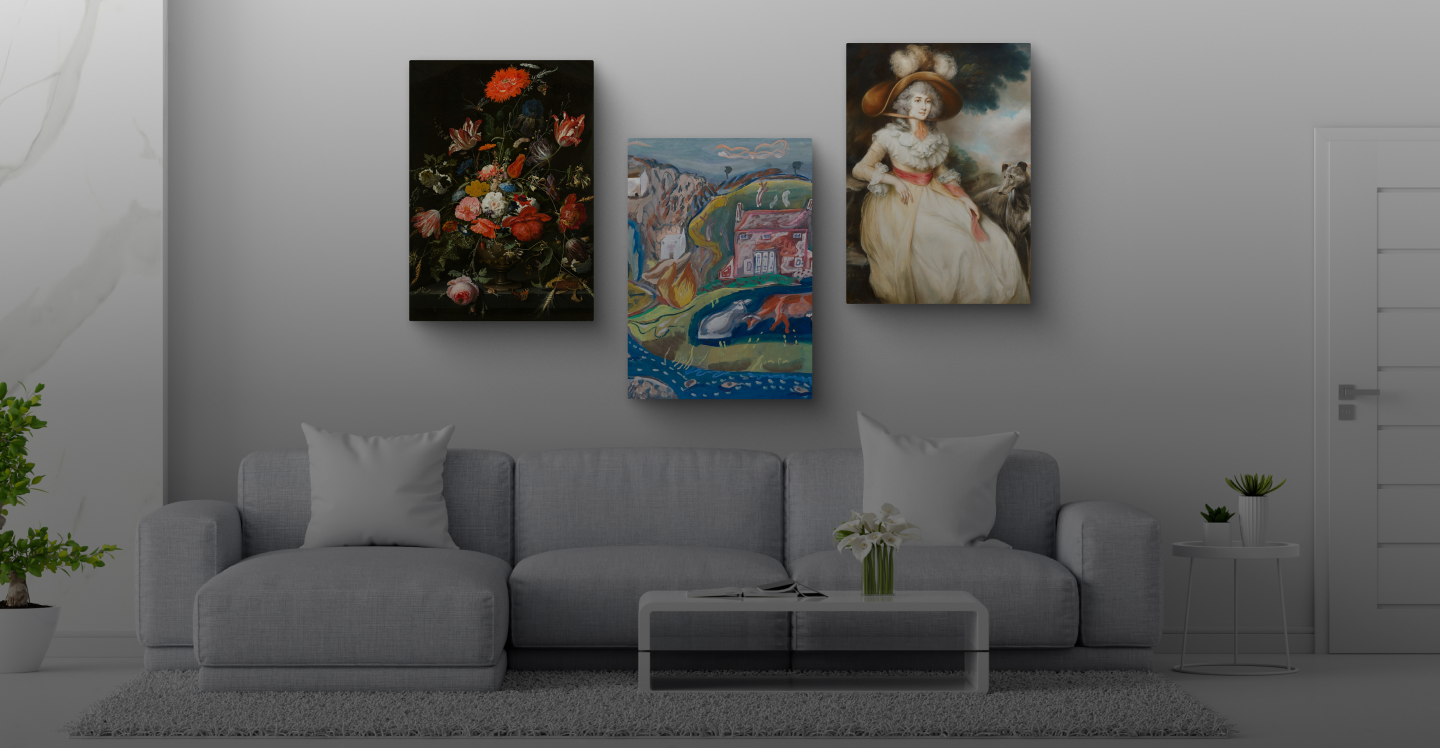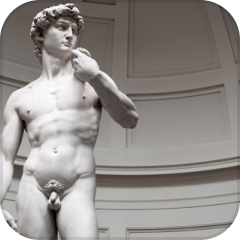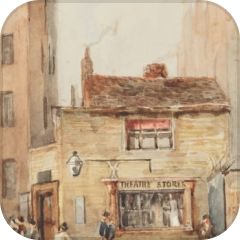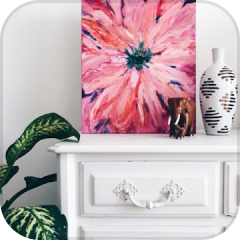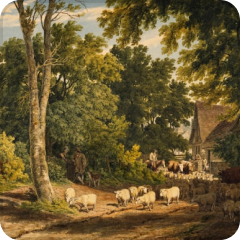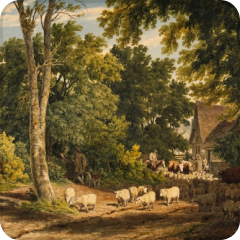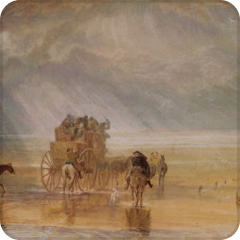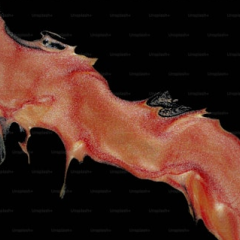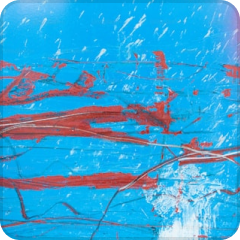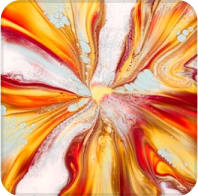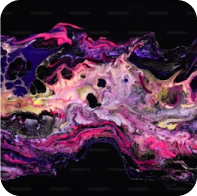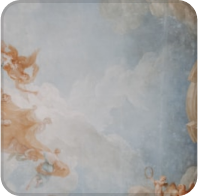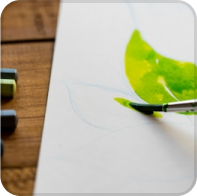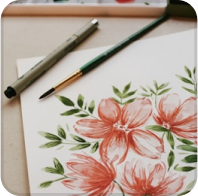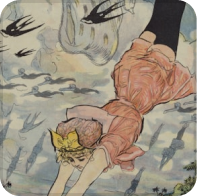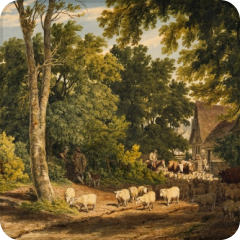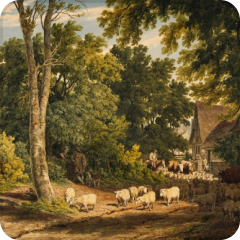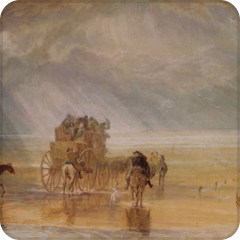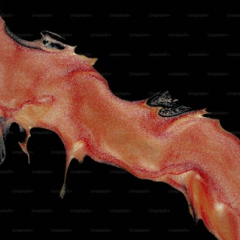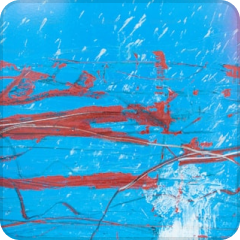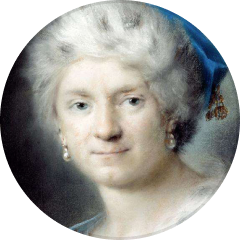





Top Categories
Transform Your Space with Personalized Art Prints
Bring your walls to life with premium, customizable canvas prints. Whether it’s your favorite memories or inspiring art, Zebaco makes it easy to create beautiful, durable pieces that reflect your style.

High-Quality Prints

Affordable Custom Art

100% Satisfaction
What’s On Sale
What Our Customers are Saying


Oliver Stone
"I recently purchased a stunning canvas from Zebaco, and I couldn't be happier with my choice! The vibrant colors and exquisite detail have truly transformed my living room. “


Amelia Rivers
"I recently purchased a stunning canvas from Zebaco, and I couldn't be happier with my choice! The vibrant colors and exquisite detail have truly transformed my living room. “


Ethan Hawke
"I recently purchased a stunning canvas from Zebaco, and I couldn't be happier with my choice! The vibrant colors and exquisite detail have truly transformed my living room. “


Sophia Bennett
"I recently purchased a stunning canvas from Zebaco, and I couldn't be happier with my choice! The vibrant colors and exquisite detail have truly transformed my living room. “


Sophia Bennett
"I recently purchased a stunning canvas from Zebaco, and I couldn't be happier with my choice! The vibrant colors and exquisite detail have truly transformed my living room. “
Wall Stick Photo Pictures For Wall: Complete Guide to Transform Your Space
Wall stick photo pictures have become one of the most popular and versatile ways to decorate living spaces. Unlike traditional framed photographs or heavy artworks, these adhesive photo prints provide a lightweight, customizable, and cost-effective option for transforming plain walls into meaningful and stylish displays. They allow homeowners to bring personal memories, artistic designs, or motivational imagery directly onto their walls without the need for nails, frames, or complicated installation.
One of the greatest advantages of wall stick photo pictures is their flexibility. They are designed to adhere smoothly to most clean, flat surfaces and can be removed or repositioned without leaving behind residue or damage. This makes them especially appealing for renters who want to personalize their homes without committing to permanent changes. Whether used in bedrooms, living rooms, offices, or hallways, they add character and visual warmth to otherwise empty spaces.
Customization plays a central role in their appeal. Modern printing technology allows photos to be converted into adhesive wall pictures in a wide range of sizes, shapes, and finishes. Families often choose to print memorable moments such as weddings, birthdays, or vacations to create a wall gallery that reflects their personal story. Others opt for artistic images, abstract designs, or inspirational quotes that align with the theme of their interiors. Because they can be easily rearranged, wall stick photo pictures make it simple to update the décor whenever styles or moods change.
From a design perspective, these photo stickers can be arranged in countless creative ways. A cluster of small square pictures creates a gallery-wall effect, while one oversized adhesive print becomes a bold focal point above a bed or sofa. Geometric layouts, heart-shaped arrangements, or linear patterns allow homeowners to experiment with style without the expense or permanence of framed artworks. Their lightweight nature also makes them safe for children’s rooms, where bright and colorful images can foster creativity and joy.
Another advantage is their affordability. Compared to large framed wall art or canvas prints, adhesive photo pictures are budget-friendly while still offering vibrant color reproduction and decent durability. They are ideal for students decorating dorm rooms, families seeking seasonal wall updates, or businesses that want to refresh office spaces without heavy investments. Many options also come in waterproof or UV-resistant finishes, which extend their lifespan in areas exposed to light or humidity.
The ease of installation cannot be overstated. Most wall stick photo pictures can be applied in minutes, requiring nothing more than a clean wall and gentle pressure. For people who enjoy DIY projects, they provide instant gratification and the opportunity to exercise creativity in arranging personal galleries. If a design feels outdated or seasonal, the stickers can be swapped out without hassle, keeping spaces fresh and engaging.
Understanding Adhesive Photo Display Systems
Adhesive photo displays represent a sophisticated fusion of printing innovation and user-friendly design principles. These products utilize specialized substrates engineered to accept high-quality digital prints while maintaining repositionable adhesive properties. The manufacturing process involves multiple layers, including a protective topcoat, photographic medium, adhesive backing, and removable liner.
The substrate material typically consists of premium vinyl or fabric compositions that resist fading, moisture, and everyday wear. Advanced printing processes ensure color accuracy and longevity, preserving treasured memories with museum-quality results. The adhesive formulation strikes a delicate balance between secure attachment and damage-free removal, utilizing low-tack compounds that won't harm painted surfaces or wallpaper.
Manufacturing standards for these products have evolved significantly, incorporating eco-friendly materials and sustainable production methods. Many manufacturers now offer VOC-free adhesives and recyclable substrates, addressing environmental concerns while maintaining product performance. This commitment to sustainability resonates with environmentally conscious consumers seeking responsible decorating alternatives.
The versatility of these systems extends beyond simple photo reproduction. Modern printing capabilities accommodate various image types, including digital artwork, graphics, text elements, and mixed media compositions. This flexibility enables users to create cohesive design schemes that reflect personal aesthetics and complement existing decor elements.
Diverse Material Compositions and Surface Options
Contemporary adhesive wall decor encompasses numerous material variations, each offering distinct aesthetic and functional characteristics. Matte finishes provide sophisticated, glare-free viewing experiences that complement traditional interior design schemes. These surfaces effectively minimize reflections, ensuring optimal visibility under various lighting conditions while maintaining professional presentation standards.
Glossy finishes enhance color vibrancy and create dynamic visual impact, particularly effective for contemporary or modern design aesthetics. The reflective properties of glossy surfaces can amplify ambient lighting, contributing to brighter, more energetic room atmospheres. However, these finishes may show fingerprints more readily, requiring occasional maintenance to preserve pristine appearance.
Textured surfaces introduce tactile dimensions to wall displays, creating sophisticated depth and visual interest. Options include canvas textures that mimic traditional artwork, fabric weaves that add warmth and coziness, and specialty finishes that create unique artistic effects. These textured alternatives often appeal to individuals seeking to elevate simple photography into gallery-worthy presentations.
Metallic and specialty finishes represent premium options for discerning decorators. Brushed metal effects, pearl lusters, and holographic elements can transform ordinary images into striking focal points. These specialty materials often command higher prices but deliver exceptional visual impact that justifies the investment for special projects or high-visibility areas.
Comprehensive Room-by-Room Implementation Strategies
Living room implementations focus on creating inviting social spaces that reflect family personalities and shared experiences. Consider developing chronological photo progressions that document family growth, seasonal celebrations, or milestone achievements. Large-scale arrangements work particularly well above furniture pieces, creating commanding visual anchors that draw attention and spark conversation.
Bedroom applications emphasize personal sanctuary creation through intimate imagery and calming color palettes. Couple's photography, serene landscapes, or inspirational quotes create peaceful environments conducive to rest and relaxation. Consider implementing asymmetrical arrangements that follow natural sight lines from bed positioning, ensuring optimal viewing angles during daily routines.
Kitchen implementations require moisture-resistant materials capable of withstanding cooking-related humidity and temperature fluctuations. Food photography, family recipes reproduced as decorative elements, or herb garden imagery complement culinary environments beautifully. Position displays away from direct heat sources and splashing areas to maximize longevity and maintain appearance quality.
Bathroom implementations benefit from compact, water-resistant designs that can withstand steamy conditions. Coastal imagery, botanical prints, or minimalist geometric patterns work exceptionally well in these intimate spaces. Ensure proper ventilation exists to prevent moisture accumulation that could compromise adhesive performance over time.
Children's rooms offer unlimited creative possibilities for educational and entertaining displays. Alphabet series, number sequences, world maps, or favorite character imagery can combine learning with decoration. Consider implementing modular systems that can evolve as children grow, accommodating changing interests and educational needs.
Home office spaces benefit from motivational imagery, organizational charts, or inspiring landscapes that enhance productivity and creativity. Strategic placement around computer monitors can reduce eye strain during extended work sessions while maintaining professional aesthetics suitable for video conferencing backgrounds.
Sophisticated Design Principles and Arrangement Methodologies
Creating visually compelling arrangements requires understanding fundamental design principles that govern spatial relationships and aesthetic harmony. The rule of thirds applies effectively to photo tile arrangements, dividing wall spaces into imaginary grids that guide placement decisions. Positioning key visual elements along these grid lines creates natural balance and visual flow that pleases the human eye instinctively.
Color theory plays a crucial role in developing cohesive arrangements that complement existing interior design schemes. Monochromatic approaches utilizing various shades of single colors create sophisticated, harmonious displays that integrate seamlessly with neutral decor palettes. Complementary color schemes introduce dynamic energy through strategic contrast, perfect for creating focal points or highlighting specific areas.
Scale relationships between individual elements and overall arrangements require careful consideration to achieve professional results. Mixing various sizes creates visual rhythm and prevents monotonous uniformity that can appear sterile or uninspired. Generally, odd numbers of elements (three, five, seven) create more natural, organic arrangements than even groupings.
Spacing consistency maintains visual coherence while allowing individual elements to breathe and receive appropriate attention. Uniform gaps between tiles create formal, structured appearances suitable for contemporary design aesthetics. Varying spacing can introduce organic, casual feelings that complement rustic or eclectic interior styles.
Thematic coherence ensures arrangements tell compelling visual stories rather than appearing randomly assembled. Wedding progressions, vacation documentation, seasonal celebrations, or artistic studies create narrative threads that engage viewers and encourage prolonged contemplation. These thematic approaches transform simple photo displays into meaningful artistic installations.
Advanced Creative Applications and Artistic Techniques
Beyond simple photo reproduction, these versatile mediums support numerous creative applications that push decorative boundaries. Mixed media approaches combine photography with typography, creating inspirational displays that incorporate meaningful quotes, poetry, or personal mantras. These combinations often resonate deeply with viewers, providing daily motivation and emotional connection.
Abstract photography reproduction allows homeowners to introduce sophisticated artistic elements without investing in expensive original artwork. Landscape abstracts, macro photography, or experimental digital art can create museum-quality displays that elevate interior sophistication levels significantly. These approaches particularly appeal to individuals seeking unique decorative solutions that reflect artistic sensibilities.
Seasonal rotation strategies maintain fresh, dynamic environments that evolve throughout the year. Spring gardens, summer adventures, autumn harvests, and winter celebrations create ever-changing displays that prevent decorative stagnation. This approach maximizes investment value by ensuring decorative elements remain engaging and relevant across extended timeframes.
Interactive arrangements incorporate QR codes or augmented reality elements that connect physical displays with digital content. Scanning codes might reveal video messages, additional photos, or related stories that enhance viewer engagement. These innovative approaches represent the cutting edge of home decoration, bridging physical and digital realms seamlessly.
Documentary projects using these mediums can chronicle significant life events, family histories, or personal growth journeys. Time-lapse photography sequences, before-and-after comparisons, or milestone celebrations create powerful visual narratives that preserve important memories while serving decorative functions.
Professional Implementation and Space Planning
Successful implementations require careful space analysis and strategic planning to achieve optimal results. Begin by assessing available wall space, considering furniture placement, lighting conditions, and traffic patterns that might influence viewing angles and accessibility. Measuring wall dimensions accurately ensures proper scaling and prevents overcrowding or underwhelming presentations.
Lighting analysis reveals how natural and artificial illumination affects photo visibility throughout daily cycles. Consider how morning sunlight, afternoon shadows, and evening artificial lighting impact color reproduction and overall presentation quality. Strategic placement can leverage favorable lighting conditions while minimizing potential glare or reflection issues.
Traffic flow considerations ensure arrangements don't obstruct daily movement patterns or create visual distractions in functional areas. High-traffic corridors benefit from streamlined, linear arrangements that complement movement flow rather than interrupting it. Conversational areas can accommodate more complex, engaging displays that encourage closer examination and discussion.
Ceiling height relationships influence optimal placement heights and arrangement proportions. Standard eight-foot ceilings require different approaches than vaulted or cathedral ceiling spaces. Generally, eye-level placement (approximately 57-60 inches from floor to center of arrangement) provides comfortable viewing for most individuals.
Architectural feature integration enhances overall design coherence by acknowledging existing structural elements. Window frames, doorways, built-in shelving, or decorative molding can provide natural boundaries or focal points around which to organize arrangements. Working with rather than against architectural features creates harmonious, intentional-appearing installations.
Substrate Selection and Performance Characteristics
Material selection significantly impacts both aesthetic results and functional performance across various environmental conditions. Vinyl substrates offer exceptional durability and moisture resistance, making them ideal for bathrooms, kitchens, or other high-humidity environments. These materials typically feature smooth surfaces that facilitate easy cleaning and maintenance while providing excellent color reproduction capabilities.
Fabric substrates introduce textural elements that create warm, inviting atmospheres particularly suitable for bedrooms, family rooms, or intimate spaces. Canvas textures closely mimic traditional artwork presentations, lending sophistication and artistic credibility to personal photography. These materials often incorporate natural fibers that complement organic or rustic design aesthetics.
Paper-based options provide cost-effective solutions for temporary installations or frequently changing displays. While less durable than synthetic alternatives, quality paper substrates can deliver excellent short-term results for special events, seasonal decorations, or experimental arrangements. These materials often feature enhanced recyclability for environmentally conscious consumers.
Specialty substrates incorporate unique characteristics like magnetic backing, chalkboard surfaces, or dry-erase capabilities that extend functionality beyond simple image display. Magnetic versions work exceptionally well on metallic surfaces or when frequent repositioning is desired. Writable surfaces combine decorative and functional elements, perfect for family message centers or creative project displays.
Adhesive formulations vary significantly among manufacturers, affecting both holding power and removal characteristics. Premium formulations balance strong initial adhesion with clean removal properties, preventing surface damage during repositioning or permanent removal. Understanding these variations helps consumers select appropriate products for specific applications and surface types.
Color Management and Print Quality Considerations
Achieving professional-quality results requires understanding digital color management principles and how they translate to physical print media. Monitor calibration ensures accurate color representation during image preparation, preventing disappointing discrepancies between screen appearance and final prints. Many consumers overlook this critical step, resulting in unexpected color shifts that diminish overall satisfaction.
Image resolution requirements vary based on final print dimensions and viewing distances. While standard screen resolution (72 DPI) suffices for digital viewing, print applications typically require 150-300 DPI for optimal sharpness and detail retention. Understanding these requirements helps ensure crisp, professional-appearing results that enhance rather than compromise image quality.
Color profile management becomes particularly important when reproducing images captured under various lighting conditions or with different camera systems. sRGB color spaces provide reliable consistency for most applications, while Adobe RGB offers expanded color gamuts for specialized photography. Proper profile assignment prevents unwanted color shifts during printing processes.
Brightness and contrast adjustments may be necessary to compensate for differences between backlit screen displays and reflective print surfaces. Images that appear perfect on monitors sometimes require subtle adjustments to maintain visual impact when reproduced as physical prints. Understanding these relationships helps achieve optimal results consistently.
File format considerations affect both image quality and processing efficiency. While JPEG compression offers convenient file sizes, it can introduce artifacts that become visible in large-format prints. PNG or TIFF formats preserve maximum image quality but require larger file sizes and potentially longer processing times.
Environmental Factors and Longevity Expectations
Understanding environmental influences helps maximize product lifespan and maintain aesthetic quality throughout extended use periods. Direct sunlight exposure represents the primary threat to print longevity, causing gradual fading and color shifts over time. UV-resistant inks and protective coatings can significantly extend fade resistance, but strategic placement away from intense sunlight provides the best protection.
Temperature fluctuations affect both print stability and adhesive performance, particularly in spaces with inconsistent climate control. Extreme heat can cause adhesive failure or print distortion, while excessive cold might reduce adhesive flexibility and increase brittleness. Maintaining stable indoor temperatures between 65-75 degrees Fahrenheit optimizes performance across most product types.
Humidity levels significantly impact both substrate stability and adhesive longevity, especially in bathrooms, kitchens, or basement environments. Excessive moisture can cause substrate warping, adhesive failure, or mold development behind installations. Proper ventilation and moisture control help prevent these issues while extending product lifespan considerably.
Air quality factors including cooking grease, smoke particles, or dust accumulation can gradually degrade appearance quality over time. Regular cleaning routines and strategic placement away from pollution sources help maintain pristine appearance throughout extended use periods. Consider these factors when selecting installation locations for maximum longevity.
Surface preparation requirements vary significantly based on wall conditions and substrate types. Newly painted surfaces may require curing periods before adhesive application to prevent paint damage during removal. Textured walls might need special adhesive formulations or substrate flexibility to achieve secure attachment across uneven surfaces.
Innovative Design Trends and Contemporary Applications
Current design trends emphasize authentic storytelling through personal imagery rather than generic decorative elements. Homeowners increasingly seek meaningful connections with their living spaces, driving demand for customizable solutions that reflect individual experiences and values. This shift toward personalization has elevated adhesive photo displays from novelty items to essential design tools.
Minimalist aesthetic approaches utilize selective imagery and abundant negative space to create sophisticated, uncluttered presentations. These arrangements often feature carefully curated selections that emphasize quality over quantity, creating powerful visual impact through restraint and intentional composition. Monochromatic or limited color palettes enhance this aesthetic approach effectively.
Gallery wall concepts translate professional museum presentation techniques to residential environments, creating impressive focal points that command attention and admiration. These sophisticated arrangements often combine multiple sizes, shapes, and image types to create dynamic, engaging displays that reward extended contemplation and discussion.
Geometric arrangement patterns introduce structured, contemporary aesthetics that complement modern architectural elements. Grid systems, hexagonal patterns, or angular compositions create ordered beauty that appeals to individuals who appreciate mathematical precision and clean lines. These approaches work particularly well in minimalist or industrial design schemes.
Organic arrangement styles embrace natural, flowing compositions that feel spontaneous and relaxed. These approaches often incorporate irregular spacing, varied orientations, and intuitive placement that creates comfortable, lived-in atmospheres. Such arrangements particularly suit bohemian, eclectic, or casual design aesthetics.
Specialized Surface Compatibility and Adhesion Science
Understanding surface compatibility prevents installation failures and ensures optimal adhesive performance across diverse wall materials. Painted drywall represents the most common and generally reliable surface for adhesive applications, provided the paint has properly cured and isn't flaking or chalking. Flat and eggshell paint finishes typically provide superior adhesion compared to semi-gloss or high-gloss surfaces.
Wallpaper installations require careful consideration of both wallpaper type and underlying adhesive conditions. Vinyl wallpapers generally accommodate adhesive displays well, while fabric or paper wallpapers may be more susceptible to damage during removal. Testing adhesive compatibility in inconspicuous areas helps prevent widespread damage to expensive wallpaper installations.
Textured surfaces including stucco, brick, or decorative plaster present unique challenges that may require specialized adhesive formulations or substrate flexibility. Heavy textures might prevent full contact between adhesive and surface, potentially compromising holding power or creating air pockets that affect appearance quality. Smooth, uniform surfaces consistently deliver optimal results.
Glass and mirror applications offer unique opportunities for creative displays, particularly in bathrooms or modern interior settings. However, these surfaces require specific adhesive formulations designed for non-porous materials. Temperature variations and condensation exposure can affect adhesive performance on glass surfaces, requiring careful environmental management.
Metal surfaces including appliances, filing cabinets, or architectural elements may accommodate magnetic-backed options more effectively than traditional adhesive systems. Understanding material properties helps select appropriate products that maximize holding power while ensuring clean removal when desired.
Professional Photography Optimization for Print Applications
Maximizing visual impact requires understanding how digital photography translates to physical print media, particularly regarding composition, lighting, and post-processing considerations. Images composed specifically for print applications often benefit from slightly different approaches than those intended solely for digital display or social media sharing.
Compositional considerations include anticipating how cropping and scaling affect visual storytelling elements within individual images. Important subjects should occupy central positions with adequate surrounding space to accommodate various aspect ratios and sizing options. This foresight prevents crucial elements from being eliminated during print preparation processes.
Lighting analysis reveals how various illumination types affect color reproduction and overall image mood. Natural lighting generally produces the most accurate color representation, while artificial lighting can introduce color casts that require correction during post-processing. Understanding these relationships helps capture images that translate beautifully to print applications.
Depth of field decisions significantly impact how images reproduce at various print sizes. Sharp, detailed backgrounds work well for smaller prints where fine details remain visible, while shallow depth of field creates dramatic effects that maintain impact even in larger reproductions. Consider intended print sizes when making exposure and focusing decisions.
Post-processing workflows should account for differences between screen and print color representation. Monitor calibration ensures accurate preview capabilities, while proper color profile management prevents unwanted color shifts during printing processes. Subtle brightness and contrast adjustments often enhance print results compared to screen-optimized versions.
Creative Storytelling Through Visual Narrative Sequences
Developing compelling visual narratives transforms simple photo collections into engaging storytelling mediums that captivate viewers and create emotional connections. Chronological arrangements document personal growth, relationship development, or project evolution through carefully selected key moments that represent larger stories effectively.
Thematic groupings organize images around central concepts, emotions, or experiences that create cohesive viewing experiences. Travel adventures, family celebrations, seasonal activities, or personal hobbies provide natural organizing principles that help viewers understand and appreciate displayed content more deeply.
Color story development utilizes consistent color palettes or tonal progressions to create visual harmony across multiple images. This approach often requires careful image selection and sometimes post-processing adjustments to achieve desired color relationships. The resulting displays feel intentional and professionally curated rather than randomly assembled.
Emotional arc construction considers how sequential viewing affects psychological responses and memory formation. Beginning with attention-grabbing images, developing through supporting details, and concluding with memorable climax moments creates satisfying viewing experiences that encourage repeated engagement and appreciation.
Seasonal rotation strategies maintain fresh, evolving displays that reflect changing life circumstances and maintain viewer interest over extended periods. Planning rotation schedules and preparing seasonal image collections ensures smooth transitions that keep decorative elements feeling current and relevant.
Space Psychology and Environmental Impact Assessment
Understanding how visual elements influence psychological well-being helps create living environments that support positive mental health and emotional balance. Color psychology research demonstrates how different hues affect mood, energy levels, and cognitive function, informing strategic image selection for various room functions and occupant needs.
Personal photography displays create stronger emotional connections than generic artwork, fostering sense of belonging and identity within living spaces. These connections contribute to reduced stress levels, improved mood stability, and enhanced overall life satisfaction. The psychological benefits of surrounding oneself with meaningful imagery extend far beyond simple decoration.
Memory reinforcement through visual displays helps preserve important experiences and relationships, particularly valuable for elderly family members or individuals dealing with memory challenges. Strategically placed family photos and milestone documentation can provide daily reminders of positive experiences and social connections.
Cultural representation through thoughtful image selection helps maintain connections to heritage, traditions, and values that shape personal identity. This aspect becomes particularly important for immigrant families or individuals living far from ancestral communities, providing visual links to cultural roots and shared histories.
Social facilitation occurs when thoughtfully arranged displays encourage conversation, storytelling, and shared experiences among family members and guests. Well-designed arrangements often become natural gathering points that strengthen social bonds and create lasting memories through shared viewing experiences.
Economic Analysis and Value Proposition Evaluation
Cost-effectiveness analysis reveals significant advantages compared to traditional framing methods, particularly for individuals who frequently update or rotate their displays. While initial per-image costs might appear comparable to standard prints, the elimination of frame purchases, matting materials, and professional installation services creates substantial long-term savings.
Time investment comparisons demonstrate remarkable efficiency gains over conventional decoration methods. Traditional gallery wall creation might require days of planning, measuring, drilling, and adjusting, while adhesive displays can be installed and adjusted within minutes. This time savings becomes particularly valuable for busy families or frequent relocators.
Damage prevention benefits protect rental deposits and maintain property values by eliminating holes, scratches, or other permanent alterations associated with traditional hanging methods. This protection becomes especially valuable in rental situations where security deposits might be forfeit due to wall damage from conventional picture hanging.
Flexibility value encompasses the ability to experiment with arrangements, accommodate changing preferences, and adapt to evolving life circumstances without financial penalties. This adaptability provides ongoing value that extends far beyond initial purchase costs, enabling continuous customization without additional investment.
Scalability advantages allow gradual collection building without substantial upfront investments. Users can begin with small arrangements and expand organically as budgets permit or collections grow, avoiding the financial pressure of comprehensive room decoration projects that traditional methods often require.
Surface Preparation Protocols and Installation Best Practices
Proper surface preparation ensures optimal adhesion and prevents installation failures that could damage both products and wall surfaces. Begin by thoroughly cleaning target areas with appropriate cleaners that remove dust, grease, soap residue, or other contaminants that might interfere with adhesive bonding. Allow surfaces to dry completely before proceeding with installation.
Temperature conditioning helps ensure optimal adhesive performance by bringing both substrate and wall surface to room temperature before application. Cold surfaces can prevent proper adhesive activation, while excessive heat might cause premature adhesive flow or positioning difficulties. Ideal installation temperatures typically range between 65-75 degrees Fahrenheit.
Humidity management becomes particularly important in moisture-prone areas like bathrooms or basements. Excessive humidity can interfere with adhesive curing processes and potentially lead to installation failures. Consider using dehumidifiers or improving ventilation before installation in problematic areas.
Level and alignment tools ensure professional-appearing results that enhance overall aesthetic impact. While perfect mathematical precision isn't always necessary, obvious misalignment creates distracting visual discord that undermines intended decorative effects. Simple bubble levels or smartphone applications can provide adequate guidance for most installations.
Application technique affects both immediate results and long-term performance. Gradual application from one edge to the opposite helps eliminate air bubbles and ensures complete surface contact. Firm pressure during application activates adhesive bonding, while excessive force might damage delicate substrates or cause distortion.
Removal Procedures and Surface Protection Protocols
Safe removal procedures protect both wall surfaces and enable potential reuse of adhesive products in different locations. Begin removal processes gradually, starting from corners or edges where natural separation points exist. Rushing removal procedures often results in substrate tearing or adhesive residue that requires additional cleanup efforts.
Heat application through hair dryers or heat guns can soften adhesives and facilitate easier removal, particularly for products that have been installed for extended periods. However, excessive heat might damage sensitive substrates or underlying wall surfaces, requiring careful temperature control and gradual warming approaches.
Adhesive residue removal techniques vary based on specific adhesive formulations and wall surface types. Commercial adhesive removers, household items like cooking oil or vinegar, or specialized cleaning products can effectively eliminate stubborn residues without damaging underlying surfaces. Testing removal methods in inconspicuous areas prevents widespread damage from inappropriate cleaning approaches.
Surface inspection following removal reveals any potential damage that might require repair before future installations or alternative decorating approaches. Small nail holes, minor scratches, or slight discoloration often require minimal touch-up efforts that preserve overall wall condition and maintain property values.
Documentation of successful removal procedures helps inform future installation and removal cycles, building personal expertise that improves results over time. Recording which products perform well on specific surfaces and which removal techniques prove most effective creates valuable reference information for ongoing use.
Seasonal Adaptation Strategies and Dynamic Display Management
Developing seasonal rotation systems maintains engaging, fresh environments that reflect changing life circumstances and prevent decorative stagnation. Planning seasonal themes around natural cycles, holidays, family traditions, or personal interests creates anticipation and enjoyment around regular display updates.
Storage solutions for non-displayed items require careful organization to prevent damage and facilitate easy rotation implementation. Acid-free storage materials, climate-controlled environments, and systematic cataloging ensure stored items remain in excellent condition for future use. Digital cataloging systems can help track available inventory and plan future arrangements effectively.
Transition timing strategies balance freshness with practicality, avoiding excessive change frequency that creates maintenance burdens while ensuring displays remain current and engaging. Quarterly rotations often provide optimal balance between novelty and manageability, though individual preferences and lifestyle factors should guide specific timing decisions.
Theme development processes involve selecting cohesive image collections that support intended seasonal messages or emotional atmospheres. Spring renewal themes might emphasize growth, fresh beginnings, and vibrant colors, while autumn collections could focus on harvest abundance, family gatherings, and warm tones.
Weather protection considerations become important for installations near windows, doors, or other areas where environmental exposure might affect product longevity. Understanding how seasonal temperature and humidity changes affect adhesive performance helps prevent unexpected failures during extreme weather periods.
Artistic Composition Principles for Maximum Visual Impact
Understanding fundamental artistic principles elevates simple photo arrangements into sophisticated visual compositions that command attention and create lasting impressions. Balance considerations involve distributing visual weight evenly across arrangements, preventing lopsided appearances that create visual tension or discomfort.
Contrast utilization through varying sizes, colors, orientations, or content types creates dynamic visual interest that prevents monotonous uniformity. Strategic contrast placement can direct viewer attention toward specific elements while maintaining overall compositional harmony. Understanding when to employ contrast versus consistency requires developing artistic sensibility through experimentation and observation.
Rhythm creation through repetitive elements or patterns establishes visual flow that guides viewer eye movement across arrangements. Regular spacing intervals, consistent color appearances, or repeated shapes create underlying structures that provide stability while allowing individual elements to shine independently.
Focal point establishment helps organize complex arrangements around central elements that anchor entire compositions. These focal points might be larger images, special occasions, beloved family members, or particularly stunning photography that deserves emphasis. Supporting elements should complement rather than compete with established focal points.
Unity achievement through consistent styling, processing, or presentation approaches creates cohesive appearances that feel intentional and professionally designed. This might involve consistent filter applications, border treatments, or aspect ratio selections that tie disparate images together into harmonious wholes.
Quality Assessment and Performance Monitoring
Regular quality evaluations help identify potential issues before they become significant problems requiring extensive remediation efforts. Visual inspections should assess color fading, edge lifting, surface contamination, or other degradation signs that might indicate environmental problems or product limitations.
Adhesive performance monitoring involves checking for edge lifting, corner curling, or complete detachment that might signal inadequate surface preparation, environmental stress, or product failure. Early detection enables prompt remediation that prevents progressive damage or complete installation failure.
Color stability assessment compares current appearance with original installation condition, documenting any fading, color shifts, or other changes that affect aesthetic quality. Photography documentation helps track gradual changes that might not be immediately apparent during casual observation.
Surface condition evaluation examines wall areas around installations for any signs of damage, discoloration, or other impacts that might require attention. Regular monitoring helps identify potential problems early, enabling preventive measures that protect property values and ensure satisfactory long-term results.
Replacement planning anticipates future needs based on observed degradation patterns and changing personal preferences. Understanding typical product lifespans helps budget for eventual replacement while maximizing current installation value through proper care and maintenance.
Advanced Customization Options and Personalization Features
Beyond standard rectangular formats, modern printing capabilities accommodate diverse shapes, sizes, and configurations that enable highly customized installations. Circular designs, hexagonal patterns, or custom die-cut shapes create unique visual elements that stand apart from conventional rectangular presentations.
Multi-panel compositions split single images across multiple tiles, creating impressive large-scale displays that maintain flexibility and accommodate various spatial configurations. These approaches work particularly well for landscape photography, architectural images, or abstract compositions that benefit from increased scale and visual impact.
Text integration capabilities allow combining meaningful quotes, lyrics, dates, or other textual elements with photographic content. Typography selection significantly impacts overall aesthetic results, with font choices that complement image content and overall design themes producing the most successful results.
Border and frame effect options simulate traditional matting and framing without associated costs or permanence. These digital effects can enhance image presentation, create visual separation between adjacent elements, or introduce decorative elements that complement existing interior design schemes.
Interactive elements including QR codes, augmented reality markers, or NFC chips can connect physical displays with digital content, creating hybrid experiences that bridge traditional and modern media consumption patterns. These innovations represent emerging trends that may become standard features in future product generations.
Environmental Sustainability and Eco-Friendly Alternatives
Sustainable material selection addresses growing environmental consciousness among consumers seeking responsible decorating alternatives. Recycled substrates, biodegradable adhesives, and eco-friendly printing processes reduce environmental impact while maintaining product quality and performance standards.
Longevity optimization reduces waste through extended product lifespans that minimize replacement frequency. Quality materials, proper installation techniques, and appropriate environmental management contribute to sustainability goals by reducing consumption rates and disposal requirements over time.
Reusability features enable multiple installation cycles that extend product utility beyond single-use applications. High-quality adhesive formulations and durable substrates can often accommodate several repositioning cycles before replacement becomes necessary, maximizing value while reducing waste generation.
Recycling capabilities vary among product types and local waste management systems. Understanding disposal options helps consumers make informed choices that align with personal environmental values while ensuring proper end-of-life management for exhausted products.
Alternative material exploration includes investigating plant-based substrates, water-based adhesives, and renewable resource utilization that reduces dependence on petroleum-based materials. These innovations represent important steps toward more sustainable decorating practices that don't compromise performance or aesthetic quality.
Professional Photography Tips for Optimal Print Results
Capturing images specifically intended for print reproduction requires understanding how digital photography translates to physical media, particularly regarding resolution, composition, and lighting considerations. Higher resolution capture provides greater flexibility during sizing and cropping processes while ensuring adequate detail retention across various print dimensions.
Lighting consistency helps maintain color accuracy and tonal balance across image collections intended for cohesive arrangements. Understanding how different light sources affect color temperature and contrast helps achieve consistent results that work harmoniously when displayed together.
Compositional planning considers how images will function within larger arrangements rather than as standalone pieces. Leaving adequate space around important subjects accommodates cropping requirements while ensuring key elements remain prominent regardless of final sizing decisions.
Focus accuracy becomes particularly critical for print applications where viewing distances allow detailed examination of image sharpness and clarity. Slight focus errors that might be unnoticed in small digital displays become obvious and distracting in larger print formats.
Color grading consistency across image series helps create professional, cohesive appearances that enhance overall arrangement quality. Subtle processing adjustments that harmonize color palettes, contrast levels, and tonal characteristics contribute to sophisticated, gallery-quality results.
Troubleshooting Common Installation and Performance Issues
Edge lifting problems often result from inadequate surface preparation, environmental factors, or adhesive incompatibility with specific wall materials. Identifying root causes helps implement appropriate solutions that address underlying issues rather than merely treating symptoms.
Bubble formation during installation typically indicates trapped air or inadequate surface contact during application. Prevention involves proper application techniques that gradually eliminate air pockets while ensuring complete adhesive contact across entire surface areas.
Color shifting or fading issues might result from environmental exposure, incompatible lighting conditions, or substandard printing processes. Understanding potential causes helps implement protective measures or select alternative products that better suit specific environmental conditions.
Adhesive residue problems following removal often indicate incompatible surface types, excessive installation duration, or environmental stress that altered adhesive properties. Proper removal techniques and appropriate cleaning methods can usually resolve these issues without permanent surface damage.
Size distortion or warping might occur due to humidity exposure, temperature fluctuations, or substrate quality issues. Environmental control measures and quality product selection help prevent these problems while maintaining installation integrity over extended periods.
Market Analysis and Product Comparison Frameworks
Contemporary market offerings span wide ranges of quality, pricing, and feature sets that require careful evaluation to identify optimal solutions for specific needs and budgets. Premium products typically offer superior materials, enhanced durability, and advanced features that justify higher costs for demanding applications or long-term installations.
Value proposition assessment involves analyzing total cost of ownership including initial purchase prices, potential replacement frequency, and associated maintenance requirements. Sometimes higher initial investments prove more economical through extended lifespans and superior performance characteristics.
Feature comparison matrices help evaluate competing products across multiple criteria including adhesive strength, removal ease, print quality, environmental resistance, and warranty coverage. Systematic comparison approaches prevent oversight of important factors that might affect long-term satisfaction.
User review analysis provides valuable insights into real-world performance characteristics that might not be apparent from manufacturer specifications alone. Common praise or complaint patterns often reveal important product strengths or limitations that inform purchasing decisions.
Professional recommendation sources including interior designers, photographers, or industry specialists offer expert perspectives based on extensive experience with various products and applications. These insights can prove invaluable for achieving professional-quality results in residential applications.
Future Innovations and Emerging Paradigms
Smart display integration represents an exciting frontier where physical installations connect with digital systems to create dynamic, interactive experiences. Imagine photo displays that automatically update based on social media feeds, seasonal preferences, or special occasions, maintaining fresh content without manual intervention.
Augmented reality integration could transform static displays into portals for additional content, video messages, or interactive experiences accessible through smartphone applications. These hybrid physical-digital experiences represent natural evolution paths for traditional photo display concepts.
Sustainable material development continues advancing through bio-based substrates, renewable adhesive formulations, and circular economy principles that minimize environmental impact. These innovations address growing consumer demand for responsible products that don't compromise performance or aesthetic quality.
Artificial intelligence applications might assist with composition optimization, color coordination, or automatic arrangement suggestions based on available images and space characteristics. Machine learning algorithms could analyze successful arrangements to provide personalized recommendations that enhance results for individual users.
Customization automation through advanced printing technologies could enable mass customization approaches that deliver personalized products at commodity pricing levels. This democratization of custom printing could make premium features accessible to broader market segments while maintaining quality standards.
Professional Interior Design Integration Strategies
Working with interior design professionals requires understanding how adhesive photo displays can complement broader design visions while maintaining flexibility for future modifications. Professional designers often appreciate the adaptability these products provide, enabling client customization without compromising overall design integrity.
Color palette coordination ensures photo displays enhance rather than conflict with existing or planned interior color schemes. Professional designers typically work within established color frameworks that guide all decorative element selection, including wall art and personal photography displays.
Style consistency maintains design coherence across all room elements, from furniture selection to decorative accessories. Understanding whether displays should complement or contrast with existing elements helps achieve intended aesthetic goals while preserving design unity.
Scale proportionality considers how photo arrangements relate to room dimensions, furniture sizes, and architectural features. Professional designers understand these relationships intuitively and can provide valuable guidance for achieving balanced, harmonious results.
Lighting design coordination ensures photo displays receive appropriate illumination that enhances rather than detracts from their visual impact. Professional lighting plans often accommodate artwork display requirements through strategic fixture placement and control systems.
Maintenance Protocols and Longevity Optimization
Regular cleaning schedules help maintain pristine appearance and prevent accumulation of dust, grease, or other contaminants that gradually degrade visual quality. Gentle cleaning techniques using appropriate materials prevent surface damage while ensuring displays continue looking their best throughout extended use periods.
Environmental monitoring helps identify conditions that might threaten installation longevity, enabling proactive measures that prevent premature degradation. Temperature and humidity tracking can reveal patterns that inform maintenance schedules or suggest environmental modifications that extend product lifespans.
Inspection routines systematically assess installation condition, identifying early signs of wear, damage, or adhesive failure that might require attention. Regular monitoring enables prompt intervention that often prevents minor issues from developing into major problems requiring complete replacement.
Preventive maintenance procedures including edge reactivation, surface cleaning, or environmental adjustments help maintain optimal performance throughout product lifespans. Understanding when and how to perform these procedures maximizes investment value while ensuring continued satisfaction.
Replacement planning anticipates future needs based on observed degradation patterns, changing preferences, or evolving life circumstances. Proactive planning enables smooth transitions between installations while maintaining continuous decorative enhancement.
Cultural Significance and Heritage Preservation
Photography displays serve important cultural preservation functions by maintaining visual connections to family histories, cultural traditions, and community heritage. These installations can document generational changes, preserve cultural practices, and maintain connections to ancestral communities for future generations.
Immigration experiences often involve leaving behind familiar environments and cultural touchstones that provide identity stability. Photo displays can recreate visual connections to homeland landscapes, traditional celebrations, or extended family relationships that support cultural identity maintenance in new environments.
Generational storytelling through chronological photo arrangements helps preserve family histories while educating younger generations about their heritage and family traditions. These visual narratives often become focal points for storytelling sessions that strengthen family bonds and cultural transmission.
Community documentation projects can chronicle neighborhood changes, local events, or historical developments that contribute to broader cultural preservation efforts. Individual installations might contribute to larger community memory projects that document social and environmental changes over time.
Cultural celebration displays can mark important holidays, religious observances, or traditional ceremonies that maintain cultural practices within contemporary living environments. These installations help preserve cultural identity while adapting traditional practices to modern lifestyle constraints.
Psychological Color Theory and Emotional Response Optimization
Color psychology research demonstrates significant relationships between environmental colors and psychological states, informing strategic image selection that supports desired emotional atmospheres within living spaces. Warm colors including reds, oranges, and yellows generally promote energy, enthusiasm, and social interaction, making them excellent choices for gathering spaces and family areas.
Cool colors such as blues, greens, and purples typically encourage relaxation, contemplation, and stress reduction, suiting bedroom environments, study areas, or meditation spaces. Understanding these relationships helps create environmental conditions that support intended room functions and occupant well-being.
Neutral palettes provide versatile foundations that accommodate changing preferences while maintaining sophisticated, timeless aesthetics. Grays, beiges, and earth tones create calming backgrounds that allow colorful accent pieces to shine while avoiding overwhelming visual stimulation that might cause fatigue or stress.
Monochromatic approaches utilizing various shades and tints of single colors create sophisticated, harmonious environments that feel intentional and professionally designed. These approaches often appeal to individuals seeking elegant simplicity without sacrificing visual interest or personal expression opportunities.
Complementary color relationships create dynamic visual energy through strategic contrast utilization that adds excitement and visual interest to living spaces. Understanding color wheel relationships helps identify combinations that create desired effects while avoiding chaotic or overwhelming results.
Historical Context and Evolution of Wall Decoration Practices
Wall decoration traditions span millennia, from prehistoric cave paintings to contemporary digital displays, reflecting humanity's enduring desire to personalize and beautify living environments. Understanding this historical context helps appreciate how modern adhesive displays represent natural evolution rather than revolutionary departure from established practices.
Photography's democratization throughout the twentieth century gradually made personal imagery accessible to broader populations, shifting wall decoration from exclusively artistic or religious themes toward family documentation and personal expression. This transition laid groundwork for contemporary emphasis on personalized decorative approaches.
Printing innovation has continuously expanded possibilities for reproducing and displaying personal imagery, from early black-and-white darkroom prints to contemporary digital printing systems capable of remarkable color accuracy and durability. Each advancement has made personal photography display more accessible and affordable.
Adhesive development has progressed from crude glues that damaged surfaces to sophisticated formulations that balance holding power with removability, enabling temporary installations that previous generations couldn't imagine. This innovation has democratized wall decoration by eliminating permanent modification requirements.
Cultural shifts toward mobility and flexibility have increased demand for decorative solutions that accommodate frequent relocations and changing preferences. Modern lifestyles often involve multiple residence changes throughout adulthood, making removable decorative options increasingly valuable and practical.
Space Utilization Optimization and Layout Planning
Vertical space maximization helps create impressive displays within limited square footage, particularly valuable in urban apartments or compact living situations. Strategic vertical arrangements can make rooms appear larger while providing substantial display area for meaningful imagery collections.
Corner utilization strategies address often-neglected areas that can become stunning focal points through creative photo arrangements. Corner installations can soften harsh architectural angles while creating intimate viewing spaces that encourage closer examination and contemplation.
Alcove and niche integration takes advantage of architectural features that provide natural boundaries for photo arrangements. These recessed areas often benefit from specialized lighting that enhances photo presentation while creating dramatic visual effects.
Ceiling integration possibilities include overhead displays that create unique viewing experiences, particularly effective in bedrooms where ceiling views occur naturally. However, adhesive performance on overhead applications requires careful product selection and environmental consideration.
Multi-wall coordination creates cohesive environments where photo arrangements flow naturally between adjacent surfaces, particularly effective in open-plan living areas where visual continuity enhances spatial harmony and design sophistication.
Digital Asset Management and Archive Organization
Systematic photo organization enables efficient selection and arrangement planning while preserving valuable digital assets for future use. Digital asset management systems help categorize images by date, location, subject matter, or quality ratings that facilitate quick retrieval during arrangement planning sessions.
Backup strategies protect valuable digital collections from loss due to hardware failure, accidental deletion, or other data disasters that could eliminate years of accumulated memories. Multiple backup approaches including cloud storage, external drives, and printed archives provide comprehensive protection.
Metadata management preserves important information about image capture conditions, locations, dates, and subjects that enhance storytelling capabilities and help organize collections effectively. Proper metadata practices enable powerful search capabilities that simplify large collection navigation.
Resolution archiving maintains high-quality master files while creating optimized versions for various print applications. Understanding resolution requirements for different print sizes helps balance file storage requirements with quality preservation goals.
Version control systems track editing changes and maintain original files alongside processed versions, enabling future reprocessing with different parameters or reverting to original capture conditions. This flexibility proves valuable as printing standards and personal preferences evolve over time.
Collaborative Design Involvement and Family Participation
Family-oriented design planning transforms photo arrangements into meaningful, personalized wall art that resonates across generations. When every household member actively participates in choosing images, arranging compositions, and deciding placement strategies, the result is a visually cohesive environment infused with emotional depth. This collaborative process not only enhances decorative outcomes but also nurtures creative dialogue, encouraging children and adults alike to share opinions, refine aesthetic judgment, and develop a shared sense of accomplishment. Rather than approaching photo arrangements as solitary design tasks, treating them as cooperative projects allows individuals to express personal tastes while maintaining harmony within a unified display. The act of creating visual narratives through group decision-making adds emotional resonance to wall art while cultivating lasting memories of the design journey itself.
Narrative Enrichment Through Visual Storytelling
Photo arrangements reach their fullest potential when they communicate layered narratives rather than functioning as isolated decorative elements. By selecting images that align chronologically or thematically, families can construct visual timelines that celebrate milestones, document life transitions, and preserve cherished heritage. These narrative installations elevate interior design beyond surface-level aesthetics, transforming living spaces into immersive storytelling environments. Incorporating captions or companion notes can provide historical context, while subtle sequencing allows viewers to follow familial stories naturally. The intentional arrangement of photographs in living rooms, hallways, or family spaces encourages recurring reflection on shared experiences, while visually linking past, present, and future generations in meaningful continuity.
Strengthening Social Connections Through Interactive Displays
Well-curated photo walls foster interpersonal connections by functioning as conversational catalysts for guests and family members alike. Strategically placing photographs in communal gathering areas invites visitors to engage, ask questions, and share observations. This intentional placement transforms static decorations into dynamic social tools that inspire dialogue during celebrations, dinners, or casual visits. Visitors drawn to striking arrangements naturally inquire about the stories behind displayed images, enabling hosts to share personal narratives and family heritage in a warm, authentic manner. Such thoughtfully designed displays encourage stronger bonds between relatives and friends by creating environments that emphasize shared history, mutual respect, and collective joy.
Multi-Generational Documentation and Gift Creation
Extending collaborative design efforts to include extended family members results in displays that reflect broader relationships while preserving cultural traditions and shared experiences. Inviting grandparents, cousins, or close family friends to contribute photographs and memories builds deeper intergenerational connections and creates a visual archive that spans decades. These collective documentation projects can also be transformed into personalized gifts. When curated thoughtfully, canvas reproductions or framed photo arrangements become treasured keepsakes for weddings, anniversaries, or reunions. They serve as heartfelt tokens of shared identity and lasting remembrance, reinforcing bonds between households while elevating personal décor into a medium of enduring family legacy.
Heritage Education and Cultural Continuity
Integrating historical photographs, geographic documentation, and cultural celebrations into wall art provides profound educational opportunities for younger generations. Children and adolescents exposed to visual depictions of ancestors, family traditions, and cultural milestones gain a deeper appreciation for their heritage. Displaying such imagery in prominent household locations offers subtle yet consistent exposure to family narratives, transforming living spaces into informal learning environments. These visual archives serve as teaching tools, helping parents explain ancestral origins, significant achievements, and meaningful traditions. Over time, such curated displays nurture respect for family history, instill cultural pride, and ensure valuable stories are passed forward without being lost to time.
Designing Harmonious Aesthetic Compositions
Creating impactful wall art arrangements requires careful planning to balance size, color palette, and subject matter. By combining group participation with thoughtful design principles, families can achieve harmonious compositions that are visually pleasing while emotionally resonant. Employing consistent frames, complementary tones, or structured layouts maintains cohesion without diminishing individuality. Layering personal photographs with artistic or scenic imagery creates visual rhythm, preventing monotony and enhancing the overall presentation. Whether installed as gallery-style grids, asymmetrical clusters, or single focal-point features, these arrangements merge personal identity with refined craftsmanship. Such deliberate curation ensures that displayed images function both as interior enhancements and as intimate reflections of shared family life.
Quality Control Standards and Performance Metrics
Ensuring consistent performance and reliability in printed products requires a comprehensive framework for quality control standards and performance metrics. These benchmarks are essential for manufacturers, service providers, and end-users who demand exceptional output that aligns with technical specifications and aesthetic expectations. Quality assurance in printing encompasses multiple dimensions, including color fidelity, image resolution, substrate compatibility, adhesive integrity, durability under environmental stress, customer satisfaction, and manufacturer support commitments. By systematically evaluating these aspects, stakeholders can identify deficiencies, enhance product design, and guarantee predictable performance in diverse applications.
The assessment process begins with analyzing the fundamental principles of print reproduction. Image quality is scrutinized in terms of chromatic accuracy, tonal gradients, and the fine rendering of details compared to source files. Adhesion reliability is measured under varying conditions, including exposure to heat, cold, moisture, and mechanical stress. Durability tests reveal long-term resistance against ultraviolet radiation, temperature cycling, and physical wear. Moreover, direct feedback from users provides insights into installation convenience, operational longevity, and removal efficiency, informing both product development and purchasing decisions. Finally, warranty policies and after-sales support systems reflect the confidence manufacturers have in their products, reinforcing buyer trust.
Print Quality Assessment and Color Fidelity
Evaluating print quality involves more than verifying whether colors visually match an intended design. Professional assessments utilize spectrophotometric devices, densitometers, and calibrated light booths to measure chromatic accuracy under standardized illumination. This ensures printed materials retain consistency across different viewing environments, such as daylight, fluorescent, or LED lighting. Fine detail reproduction is examined through magnification to determine whether halftones, gradients, and vector shapes maintain sharpness without unwanted artifacts such as banding, ghosting, or moiré patterns.
Substrate choice also affects color rendering. Smooth-coated papers or synthetic films often provide high resolution and saturation, while textured substrates can absorb ink unevenly, influencing tonal uniformity. Advanced color management workflows, including ICC profiling, help calibrate printers and monitors to achieve predictable output. Print verification charts allow technicians to identify deviations early in the production process, minimizing wasted materials and reprints. Consistency is critical not only within a single batch but also across different print runs over time, ensuring that branding and visual communication remain precise and recognizable.
Adhesive Performance and Surface Compatibility
Adhesive evaluation measures how securely printed products attach to a variety of surfaces without causing damage during removal. This is especially relevant for decals, labels, vehicle wraps, wall graphics, and signage that must perform reliably under fluctuating environmental conditions. Laboratory testing methods assess peel strength, shear resistance, and tack levels to verify holding power over extended durations. These tests simulate real-world stresses such as vibrations, flexing, exposure to water, oils, and dust, ensuring that adhesion remains stable even in challenging scenarios.
Equally important is the ability to remove adhesives cleanly without leaving residues or harming underlying surfaces. Compatibility studies are performed using substrates such as glass, aluminum, painted drywall, and plastics. This determines whether adhesive systems work universally or require surface-specific formulations. Selecting the appropriate adhesive involves balancing initial grip with removability, making it suitable for both temporary and permanent applications. For industries like automotive wrapping or architectural graphics, improper adhesive performance can lead to costly failures and reputational harm, highlighting the importance of rigorous quality control.
Durability and Environmental Resistance
Printed products face diverse environmental challenges depending on their intended use. Whether deployed outdoors on building facades or indoors in high-traffic areas, materials must withstand temperature swings, ultraviolet light exposure, humidity, and physical abrasion. Accelerated weathering tests, including xenon arc exposure and thermal cycling, simulate months or years of environmental stress in condensed timeframes. These evaluations measure fading, cracking, warping, and adhesive degradation to predict real-world lifespans accurately.
Durability also involves resistance to chemicals, solvents, and cleaning agents. Products used in industrial settings, hospitals, or food preparation areas must tolerate frequent sanitization without image degradation. Protective laminates, UV coatings, and solvent-resistant inks extend performance, but only thorough laboratory analysis can confirm long-term viability. Understanding these performance limitations enables realistic product warranties, accurate marketing claims, and informed decision-making for end-users selecting materials for demanding environments.
Customer Satisfaction and Real-World Performance
Even when laboratory tests confirm excellent performance, real-world feedback is essential to validate product claims. Customer satisfaction metrics provide insight into installation convenience, visual quality, tactile feel, and longevity under actual usage conditions. Surveys, focus groups, and warranty claim data reveal common concerns or unexpected failure modes that controlled testing environments may overlook.
Positive user experiences enhance brand reputation, while recurring complaints prompt manufacturers to adjust adhesive chemistry, improve protective coatings, or revise printing processes. Direct feedback loops also assist distributors and installers by identifying which materials deliver the best value and which require specialized handling techniques. By analyzing these insights, businesses align their offerings with customer priorities, fostering loyalty and increasing market share.
Warranty Coverage and Manufacturer Support
A reliable warranty reflects a manufacturer’s confidence in product durability and performance. Evaluating warranty terms involves examining coverage duration, limitations, exclusions, and the responsiveness of customer support teams. Products backed by comprehensive warranties generally undergo more stringent quality control measures before reaching the market, reducing the likelihood of performance failures.
Clear warranty claim procedures, accessible technical documentation, and responsive support channels empower customers to resolve issues efficiently. Inadequate support or vague warranty conditions undermine buyer confidence, even if the product quality is technically sound. Manufacturers that provide training for installers, maintenance guidelines, and replacement programs demonstrate a commitment to long-term user satisfaction. This reinforces the credibility of their performance claims while minimizing disputes and product returns.
Integrated Standards for Consistent Performance
To achieve consistently high performance, manufacturers adopt integrated quality control frameworks that combine color calibration protocols, adhesive reliability tests, durability simulations, customer satisfaction tracking, and warranty assurance. These systems establish objective benchmarks that products must meet before entering the marketplace. Certification by independent testing laboratories or compliance with recognized international standards provides additional credibility and assures customers that products have been evaluated rigorously.
This holistic approach benefits all stakeholders. Printers reduce production errors and waste, distributors gain reliable products to recommend, and end-users receive materials that meet or exceed expectations. Continuous refinement of these standards through ongoing research, material science advancements, and direct user feedback ensures that print products remain competitive in markets demanding both aesthetic excellence and technical reliability.
Conclusion
The transformative power of Sticky Picture & Photo Tiles For Wall extends far beyond simple decoration, representing a fundamental shift toward personalized, flexible living environments that adapt to evolving life circumstances. These innovative solutions democratize interior design by eliminating traditional barriers while enabling authentic self-expression through meaningful imagery. The convergence of advanced printing capabilities, sophisticated adhesive formulations, and user-friendly application processes has created decorative options that were unimaginable just decades ago.
Modern families face unprecedented mobility demands, changing living situations frequently due to career opportunities, family circumstances, or lifestyle preferences. Traditional decoration methods often prove inadequate for these dynamic lifestyles, requiring permanent modifications that limit flexibility and increase relocation complexity. Adhesive photo displays address these challenges by providing substantial decorative impact without permanent commitment, enabling beautiful personalized spaces regardless of residence duration.
The psychological benefits of surrounding oneself with meaningful imagery cannot be overstated, particularly in contemporary society where digital connections often replace physical presence. Visual reminders of cherished relationships, accomplishments, and experiences contribute to emotional well-being while creating environments that truly feel like home. These benefits prove especially valuable for individuals experiencing life transitions, geographic relocations, or other circumstances that disrupt familiar environmental cues.
Environmental sustainability considerations increasingly influence consumer choices across all product categories, including home decoration. The longevity and reusability characteristics of quality adhesive displays align with responsible consumption practices while reducing waste associated with frequently changing decorative schemes. As manufacturers continue developing eco-friendly formulations and sustainable production methods, these products represent increasingly responsible choices for environmentally conscious consumers.
The creative possibilities enabled by these versatile mediums continue expanding as printing capabilities advance and user communities share innovative applications. From simple family photo displays to sophisticated artistic installations, the spectrum of achievable results accommodates every aesthetic preference and skill level. This accessibility ensures that everyone can benefit from enhanced living environments regardless of artistic training or design experience.
Future developments promise even greater functionality through smart home integration, augmented reality enhancement, and automated content management systems. These innovations will further streamline the creation and maintenance of dynamic, personalized environments while preserving the essential human connection to meaningful imagery that drives initial adoption.
The investment value of quality adhesive photo displays extends beyond immediate decorative benefits to encompass long-term flexibility, emotional satisfaction, and practical convenience. Unlike many home decoration purchases that become outdated or lose relevance over time, these systems grow more valuable as photo collections expand and life experiences accumulate. The ability to continuously refresh and reorganize displays ensures ongoing satisfaction that justifies initial investments many times over.
As society becomes increasingly mobile and digital, the importance of creating grounded, personalized physical environments grows correspondingly. Sticky Picture & Photo Tiles For Wall provide essential tools for maintaining human connections to place, memory, and identity within contemporary living contexts. Their continued evolution and adoption represent positive responses to fundamental human needs for beauty, meaning, and personal expression within the spaces we call home.



